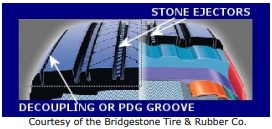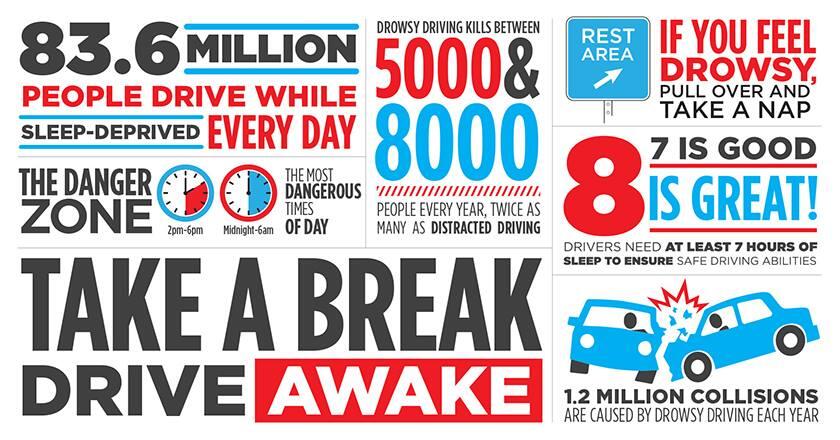How Drivers Can Impact Tire Cost and Tire Safety
Next to fuel, tires have been and will continue to be the #1 maintenance issue facing fleets today. Drivers can have an enormous impact on your tire expenses and their safety during a pre-trip inspection and while they are on the road. During the pre and post trip inspection, it is important for drivers to visually inspect tires for any sign of irregular wear, cuts, snags, and punctures; and report that information to the maintenance department either directly or through a DVIR. But what about checking the tire air pressures during the walk-around inspection? It does take time to check the air pressure on 6 to18 tires and how does the driver know that the pressure gauge he is using is even accurate? After checking the air pressure, it is also possible that a valve core can stick causing the tire to lose air. The driver, of course, would need to know what the recommended air pressure is for steer, drive, and trailer tires. Many fleets have different specs for air pressure depending on wheel position. Even if the driver completes these checks, what if he (or she) finds that the inside dual drive tires are all 10 PSI too low. If the driver is on the road, will they take the vehicle to a truck stop to get air? The driver does not own the vehicle so why should he care if the tire is 10 PSI underinflated. This is exactly why it is so important to educate your drivers upon hire and during employment about tire maintenance and safety. Most drivers have no idea that the tires on a tractor/trailer unit may have cost over $7,500. During new driver orientation and safety meetings, drivers need to hear about tires and how they can influence:
- Safety of operating the CMV
- Tire removal mileage
- Fuel economy
- Retread ability
- Tire related roadside service calls
Drivers must fully understand that their jobs depend on helping their employer do everything in their power to get the most out of their $6000 tire investment. If the driver understands that there is a direct correlation between running tires underinflated and fuel economy, he/she could save the company close to $1000 per year in fuel alone. There’s more that the driver can do: If the driver, in a pre/post trip inspection can identify a possible vehicle alignment condition based on steer tire irregular wear, that tractor could be fixed and the tires saved from early removal. And his driving habits matter as well - if the driver does not accelerate aggressively and makes smooth turns, tires will last a lot longer as the tread rubber will not be scrubbed off as quickly. Striking curbs is also a leading cause of ending a tires life prematurely. Many fleets today recognize the role the driver can play in maximizing their tire budget. Most have some sort of incentive program for those drivers who can generate the most miles on their tires and can consistently get the best fuel economy by keeping their tires properly inflated ALL the time. Having a program to educate drivers on these issues can save your company in a very short time.
Measuring Tire Tread Depth
Tread depths need to be checked and recorded because DOT has a legal limit -4/32” for steer tires and 2/32” of rubber for drive and trailer tires. That means thatif any spot in the major grooves of a steertire are found to be 4/32” or less, that tire must be removed from service. However, it can either be retreaded or moved to the trailer and run down to 2/32" minimum before entering the retreading process. Drive tires would be required to be removed from service or retreaded when any major groove reaches 2/32” of rubber to be safe. Most fleets have found over the years that running the tire down to 2/32”.
The last tip about measuring tread depth: never measure in the decoupling groove which is found in many steer tire designs to reduce irregular wear. This outside decoupling groove is sometimes known as a PDG groove (Pressure Distribution Groove) and they may be very deep or may be very shallow–but it is not the same depth as the major tire grooves.
November 1st-8th is Drowsy Driving Prevention Week
The National Sleep Foundation has launched Drowsy Driving Prevention week as an educational campaign designed to save lives by increasing awareness of the dangers of driving while sleepy. The National Highway Traffic Safety Administration estimates that drowsy driving causes at least 100,000 police-reported crashes and kills more than 1,550 Americans each year.
It is curious that all states have laws in place to enforce drunken driving but few have laws to cite a driver who has fallen asleep causing an accident. Only the state of
For more information on Drowsy Driving Prevention Week, visit www.drowsydriving.org.
CSA Violation List Updated in Time for September Snapshot
The list of severity-weighted violations appearing in the Safety Measurement System (SMS) Methodology was updated in late September to better align with the roadside inspection program. The violations are a key part of the algorithms used to score motor carriers and drivers under the Compliance, Safety, Accountability (CSA) enforcement program.
The Federal Motor Carrier Safety Administration's (FMCSA) updated methodology:
Added 63 violations,
Removed 4 violations, and
Updated the descriptions of 34 violations.
These changes took effect in the SMS with the September 25, 2020 snapshot.
What changed?
Many of the revisions are best described as "housekeeping." High-level citations were replaced with more descriptive violations. For instance, "Operating a CMV without a CDL" now has multiple violations beneath it identifying specific violations for failing to have the proper endorsement for the vehicle being operated.
One of the more notable additions relates to information provided to roadside inspectors from the CDL Drug and Alcohol Clearinghouse. Inspectors can see whether a CDL driver is prohibited from performing a safety-sensitive function, and consequently, place the driver out of service. The roadside inspection report would cite " 390.3E -Prohibited from performing safety sensitive functions per 382.501(a) in the Drug and Alcohol Clearinghouse." The violation is now scored under CSA, using a severity value of 10, the highest possible.








